Recent Fire Damage Posts
Stay Safe: How Many Smoke Alarms Do You Need in Your Home?
4/29/2023 (Permalink)
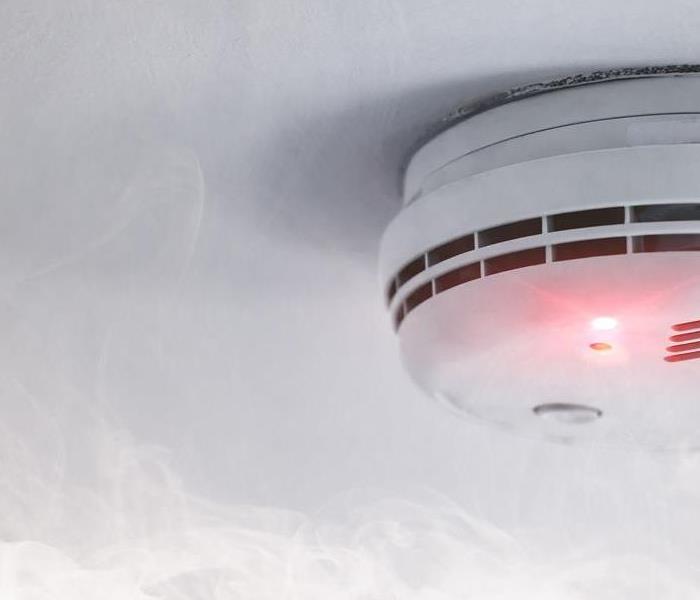 Smoke alarms are crucial part to your home
Smoke alarms are crucial part to your home
Smoke alarms are essential safety devices that can provide early warning of a fire in your home. According to the National Fire Protection Association (NFPA), having working smoke alarms in your home can reduce the risk of dying in a fire by as much as 50%. However, one smoke alarm may not be enough to adequately protect your family and home. So, how many smoke alarms should you have in your home?
Smoke Alarm Installation
The NFPA recommends that every home should have smoke alarms installed in every sleeping room, outside each separate sleeping area, and on every level of the home, including the basement. This means that if you have a two-story home with three bedrooms and a basement, you should have a minimum of five smoke alarms installed.
It's important to note that smoke alarms should be installed in the right places. You should install smoke alarms on the ceiling or high on a wall because smoke rises. You should also avoid placing smoke alarms near windows, doors, or ducts where drafts could interfere with their operation. Additionally, smoke alarms should not be installed in kitchens or bathrooms where steam and cooking fumes could trigger false alarms.
Test Alarms
It's also important to test your smoke alarms regularly to ensure that they are working properly. The NFPA recommends testing your smoke alarms at least once a month by pressing the test button on the alarm. If your smoke alarms are battery-operated, you should replace the batteries at least once a year, and if they are more than ten years old, you should replace the entire unit.
If you have a larger home, you may need additional smoke alarms to ensure that every area of your home is covered. For example, if you have a large living room or family room, you may want to install an additional smoke alarm in that area. If you have a garage or workshop, you should also install a smoke alarm in that area.
Consider Carbon Monoxide Alarms
In addition to smoke alarms, you may also want to consider installing carbon monoxide (CO) alarms in your home. CO is an odorless and colorless gas that can be deadly, and it's produced by the incomplete burning of fuels such as gas, oil, and wood. CO alarms should be installed on every level of the home and outside each sleeping area, just like smoke alarms.
In conclusion, having smoke alarms in your home is crucial for fire safety, and the NFPA recommends having smoke alarms in every sleeping room, outside each separate sleeping area, and on every level of the home. If you have a larger home or additional areas that may require coverage, you may need to install additional smoke alarms. It's also important to test your smoke alarms regularly and replace them when necessary. And don't forget about carbon monoxide alarms, which can also save lives. By taking these simple steps, you can help protect your family and home from the devastating effects of a fire or carbon monoxide poisoning.
Tips For Grease Fires in your Home or Business
2/7/2023 (Permalink)
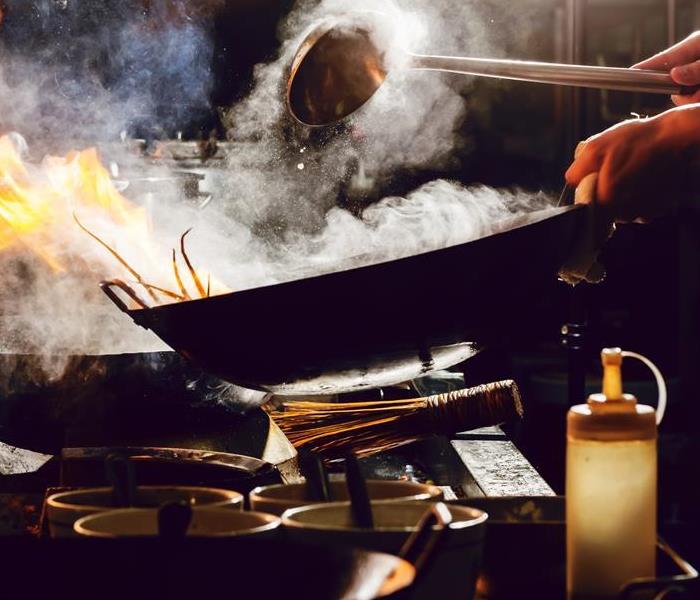 If your property suffers a fire loss, give us a call today!
If your property suffers a fire loss, give us a call today!
Grease fires are scary, but if you know what to do when they start, there’s no need to panic. Grease fires can be started by cooking oils (vegetable oil or shortening), bacon grease, butter and margarine. It's also important to keep these items stored safely away from heat sources and out of reach from children and pets. However, if you’re like most people on any given day of the week—and if you're reading this article—you already have some food that's been left on the stove unattended until it catches fire. So let me tell you exactly what steps to take if that happens.
First things first, don’t panic.
The first thing you should do when a grease fire begins to heat up is to stay calm. Panicking will only make the situation worse, which makes sense: Panic can cause you to make bad decisions, like trying to put out a grease fire yourself or running away from it instead of towards an exit.
Instead of panicking, take these steps:
- If possible, get everyone out of the house and call 911 immediately. Do not try to put out the fire yourself—it's dangerous and could result in injury!
- Make sure that everyone is safe before doing anything else (including calling 911).
Don’t use water to put out a Grease Fire
While you may have been taught to use water to put out a grease fire, this is actually the worst thing you can do. Water will spread the fire and make it worse.
If it's safe for you do so, turn off the heat source and see if that stops the flames. You might also try smothering the flames—but only if you're sure no one will get burned in the process of doing this! Finally, if all else fails, use your kitchen extinguisher (if one is available).
Use a fire extinguisher instead! The best option for putting out a grease-based fire is an ABC-type extinguisher, which will coat the burning fuel with foam, preventing oxygen from getting to it and smothering the flames. If you don’t have one of those handy (and most people don’t), gather up some baking soda and throw that on top of your burning grease. It won’t stop the combustion process altogether but will help cool off your frying pan enough so that if there are no sparks nearby, it should go out on its own.
Turn off the Heat Source
If it's safe to do so, shut off the heat source. This may mean turning off your stove, oven or other appliance. Or it may mean turning off an electric or gas supply to your stove. If you are using a microwave, turn it off but don't open the door—a vacuum could cause sparks and reignite the grease fire.
Smother the fire with a Fire Blanket
If you have a fire blanket nearby, this is another option for how to stop a grease fire. A fire blanket is made of a special material that makes it easier for you to smother the flames by covering them with the material. Use the same technique as above: Cover the entire area with water from your sink or bucket, then place the blanket overtop of it so that it covers all of the burning grease.
After you’ve successfully stopped your grease fire using these methods, dispose of your used fire blankets according to local regulations—often they need taken back to specialized recycling centers or disposed in certain ways depending on what material they're made out of.
If your home or business suffers from a fire loss, give SERVPRO of Tri Cities West / Franklin County a call for further questions and we will be happy to help!
Are Smoke Damage and Fire Damage Similar?
1/9/2023 (Permalink)
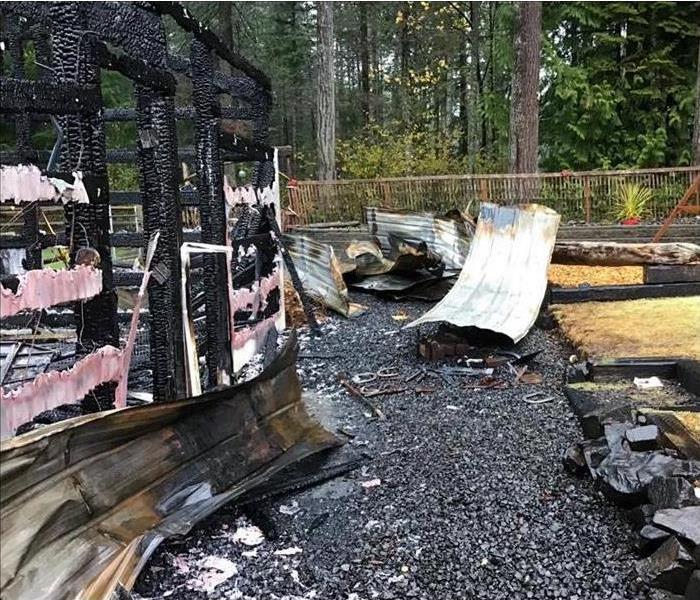 SERVPRO of Tri-Cities, specializes in fire damage
SERVPRO of Tri-Cities, specializes in fire damage
Are Smoke Damage and Fire Damage Similar?
Smoke and fire damage are often used interchangeably, but they're very different issues. Smoke damage is the residue left behind after a fire, while fire damage refers to the actual destruction caused by flames. Both can be mitigated using similar methods, but they require different approaches in order to be addressed properly. Keep reading to learn how to tell them apart.
Smoke Damage is Caused by Fire Damage
Smoke damage is caused by fire damage. Smoke damages your Finley, WA home, but it does not destroy it. Smoke and soot cause a lot of distress for homeowners because they can make your home unlivable for months or even years.
Though smoke damage is most often associated with fires, there are many other causes of smoke damage as well—including cooking grease fires, burning candles or incense indoors, electrical short circuits and even spontaneous combustion due to chemical reactions within household items (these are called "inherent risks" and are covered under homeowner's insurance policies). In most cases, these conditions do not cause permanent structural changes to homes; however they do cause extensive property damage that can be extremely costly when the property owner decides to sell the home at some point in the future (or if they decide to rent out their property instead of selling).
Fire Damage Affects a Much Larger Area Than Smoke Damage
Fire damage is typically more severe than smoke damage. In fact, the two terms are often used interchangeably in conversation. However, the two can be distinguished by how they affect your home.
Smoke damage typically affects a smaller area than fire damage. The fire department will often stop at a wall before extinguishing it completely to prevent further damage from spreading throughout your home. Smoke is much more likely to travel throughout your house than flames because of its consistency (it consists of tiny particles), which allows it to spread through vents and other small spaces easily. Fire on the other hand usually stays in one place until it's extinguished entirely or goes out naturally on its own (if left alone).
Fire causes smoke as well as leaving behind soot and charred remains after being put out by firefighters, who have special equipment designed specifically for fighting fires like these! So whether or not there was any actual "smoke" involved during this disaster may not matter; if there were flames going on inside your walls somewhere then you're still looking at significant amounts of both types of residue left behind after everything has been cleaned up
Smoke and Fire Damage can be Mitigated Using Similar Methods
Smoke and fire damage can be mitigated using similar methods. Both require cleaning, deodorizing, and repairing to restore the home. There are some differences in how each material is treated, but the end goal is still the same: a clean, habitable space that looks like it did before the trauma occurred.
Mitigation
Although fire damage and smoke damage are both results of an unfortunate event, they are different issues that need to be mitigated in different ways. Smoke damage is a result of fire damage. In other words, smoke can only be present when there is fire. The smoke and the flames are two different issues, but they both need to be mitigated in order for you to get your home back to normal.
While it may seem like we’re splitting hairs here—and maybe we are!—the distinction between them has implications for how you repair your home after an unfortunate event has occurred. For example, if there was a fire in your kitchen, it will likely have caused destruction throughout the room (if not beyond). Although this might sound like an obvious point, it’s important because the scope of this destruction will likely mean that you need professional help with repairing or rebuilding certain parts of your house before moving forward with any cleaning efforts at all
In the end, it’s important to remember that both smoke damage and fire damage can be mitigated by contacting the right professionals. You should never try to handle these issues on your own or attempt DIY repairs. Instead, you should call in experts who have experience with these situations and know exactly what they are doing when it comes time to clean up after a fire or other disaster strikes!
Frequently Asked Questions About Fire and Your Insurance
7/15/2022 (Permalink)
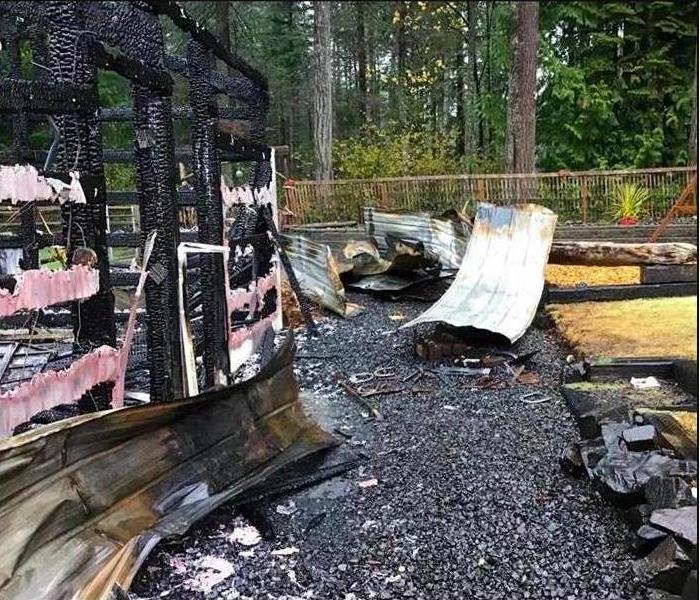 A home suffered from fire damage in Richland, MA
A home suffered from fire damage in Richland, MA
Your insurance will cover most of the damage from a home fire on your property. Most homeowners and renters will receive sufficient coverage through their standard insurance policies. However, those with a higher risk may be excluded and need to take other measures.
What Coverage Is Offered To Protect Against Fire and Smoke Damage?
Your insurance policy will cover many of your expenses due to a home fire. The most common expenses they cover include:
- Repairing your home
- Replacing your personal belongings
- Expenses related to lawsuits due to a spreading fire
- Additional living expenses
Is Standalone Fire Insurance an Option?
You can purchase standalone fire insurance for your home. These policies offer additional coverage that protects you financially in the event of a home fire. They cover damage strictly related to fire, smoke, or explosions. While they don't cover as many perils as standard insurance policies, fire coverage is often cheaper. Therefore, this is a good option for people who live in older homes or those with a history of claims. It is also a great option for your secondary residence which is vacant for most of the year.
What Happens When Your Home Doesn’t Qualify for Standard Insurance?
If your house in Richland, WA has a high risk of catching fire, you may find that your home doesn't qualify for standard insurance. You may be denied some common reasons: living in an arson zone, being too far from the fire department, or living near a brush or a canyon. Fortunately, many homeowners who cannot receive coverage for fires can apply for government-backed insurance policies that have fewer qualifications.
You can expect your standard insurance coverage to pay for you to hire a fire restoration company and start getting back to normal after a fire. Additionally, standalone policies are an option for people looking for cheaper options. They are also great for protecting your vacation home from a vacant home fire. If you cannot get a standard insurance policy, there are government-backed options that are easier to qualify for.
Candles: Safe Burning Practices and Comparable Alternatives
6/29/2022 (Permalink)
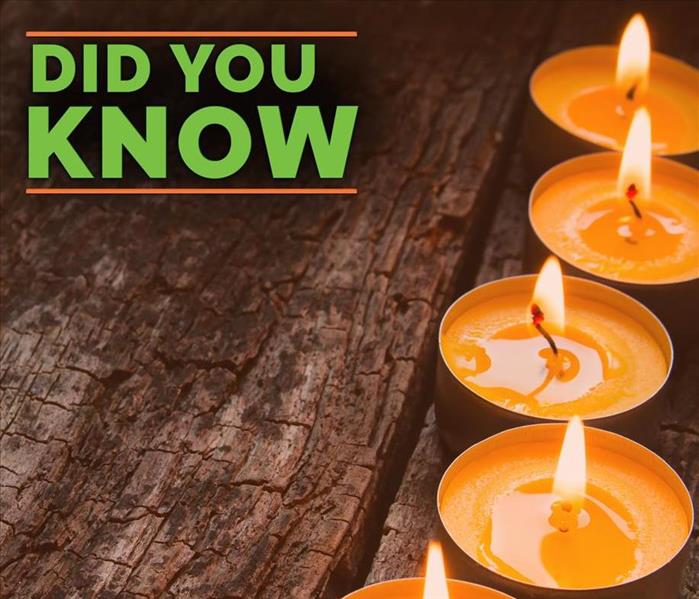 A burning candle is an open flame that could easily ignite its surroundings if left unattended.
A burning candle is an open flame that could easily ignite its surroundings if left unattended.
Candles: Best Practices for Burning and Comparable Alternatives
Over the years, candles have remained common in homes across the world, but it's essential to understand how important it is to practice using them safely in your home to avoid a candle fire. A burning candle is an open flame that could easily ignite its surroundings if left unattended, increasing the need for fire damage restoration and smoke cleanup in Richland, WA. Additionally, there are several candle alternatives on the market that could serve the same purpose without the safety risks.
The following guide can help you avoid accidentally starting a house fire.
Safety Tips To Avoid a Candle Fire
Taking precautions is the only way to stay safe when using candles. Here are some ways to ensure a lit candle doesn't cause a fire:
- Lit candles should be kept a safe distance away from anything flammable.
- The candle wick should be trimmed to about 1/4 inch to ensure that the flame remains small.
- Candles need to be extinguished if there is no one in the room to attend to them.
- Candles should not be burning within reach of young children or pets.
- All lit candles must be placed on a stable surface.
- Drafty areas such as near air vents, fans, or open windows are not optimal places to burn candles.
- Candles should be extinguished before bedtime.
Alternatives to Traditional Candles
While candles can be safely used with caution, utilizing alternatives is a great way to have a similar experience while avoiding a candle fire. Taking advantage of safer options will still provide people with the scents or ambient light of candles without the risks. A few worthy substitutes include flameless candles, essential oil diffusers, incense, air freshener spray, lanterns, plug-in air fresheners, and electric wax warmers. These alternatives can be powered by batteries or electricity, making them ideal for a safe environment for all people and animals in the home.
Utilizing the safe candle burning practices listed and trying replacements to traditional candles are ideal ways to decrease or eliminate the chances of a fire in your home.
How To Use an Extinguisher During a Fire
2/8/2022 (Permalink)
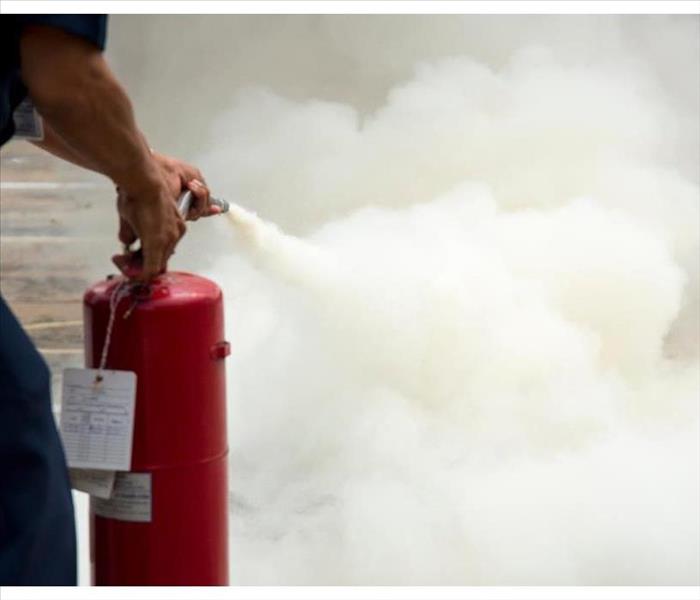 A large house fire is a job for firefighters, but small fires can usually be handled with a fire extinguisher.
A large house fire is a job for firefighters, but small fires can usually be handled with a fire extinguisher.
When A Fire Occurs, Here's How To Use An Extinguisher
Being able to protect your home in Richland, WA, can give you peace of mind. While you want to leave large fires to the fire department, every home should have at least one fire extinguisher on every floor that is easy to access in case of a minor emergency. It's not enough to own the devices, however. You and your family should know how to use them properly by following the P.A.S.S. (pull, aim, squeeze and sweep) technique.
1. Pull
Every extinguisher comes equipped with a pin and a seal. When these items are intact, you know that no one has discharged or tampered with the device. In order to use it, you need to pull the pin out by gripping the tab and yanking it. This breaks the seal and prepares the extinguisher for use.
2. Aim
The nozzle of the fire extinguisher needs to be aimed at the right portion of the fire to work well. It may seem right to aim at the top so that the discharge rains down on the fire, but this is unlikely to put out a small kitchen fire. Aim the nozzle at the base of the fire.
3. Squeeze
Once you have the nozzle pointed in the right direction, squeeze the handle to release the contents of the extinguisher. Don't be afraid to use all of the extinguishing agent if that's what it takes to avoid as much fire damage as possible.
4. Sweep
The entire base of the fire should be covered. To accomplish this, you will need to sweep the nozzle back and forth from end to end of the fire. If you release all the contents and the fire is not out, fire mitigation specialists recommend that you call 911 to enlist professional help so that the fire doesn't get out of hand.
A large house fire is a job for firefighters, but small fires can usually be handled with a fire extinguisher. Knowing how to use it can help you put a fire out in a hurry.
What Kids Need To Know About House Fires
2/4/2022 (Permalink)
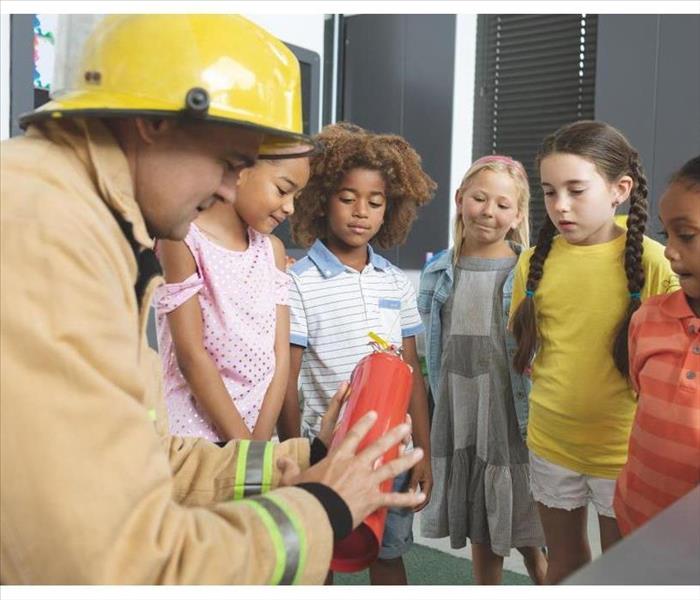 Parents should teach kids safety measures in case of a home fire.
Parents should teach kids safety measures in case of a home fire.
What Every Child Should Know About House Fires
Parents should teach kids safety measures in case of a home fire. Here are several steps that can prepare children to safely evacuate a burning structure.
What Fire and Smoke Alarms Mean
Fire and smoke alarms make loud sounds that are intended to get the attention of the occupants of a residence and wake anyone who may be sleeping when a fire starts. Familiarize kids with these noises and what they mean by testing alarms during fire drills. These drills should cover several fire escape basics:
- Rolling out of bed
- Pursuing evacuation routes
- Exiting the house
It is a good idea to do home fire drills several times a year to teach kids safety measures. Develop a plan to increase family fire safety awareness.
How To Evacuate
A fire safety strategy should include primary and secondary evacuation routes. Work with a simple floorplan or play a game in which kids find the fastest ways out of a house from each room. Determine which evacuation routes are best given the age and physical condition of all family members.
Where To Go
Another important part of a fire escape plan is identifying a safe place to meet after evacuating. Parents should make sure that a meetup location satisfies several criteria:
- Far enough away from a burning structure
- Known to all family members
- Not located downwind from smoke
Kids should know to go to this location and wait for other family members or help to arrive. Make reaching this location a part of regular fire drills.
Parents may want to practice evacuation maneuvers such as bed rolls, fire crawls, and door temperature tests during fire drills or turn preparedness practice into games. Teaching kids safety measures is an important part of a family fire safety plan. If fire damages your home in Kennewick, WA, rely on the expertise of mitigation and restoration specialists.
How Water Damage Can Complicate Fire Cleanup Efforts
1/13/2022 (Permalink)
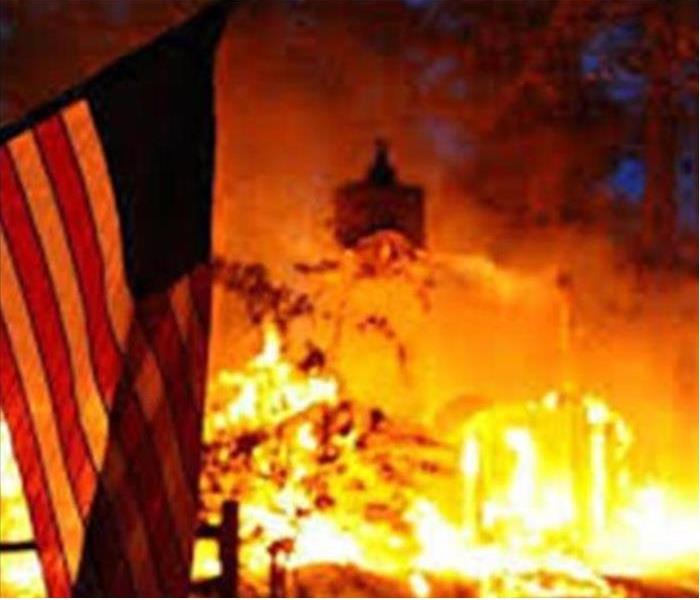 Depending on the intensity of the blaze, completing a thorough fire cleanup may require numerous steps.
Depending on the intensity of the blaze, completing a thorough fire cleanup may require numerous steps.
How Water Damage Can Make Fire Cleanup More Difficult
A fire can destroy or damage numerous aspects of your Richland, WA, business. Depending on the intensity of the blaze, completing a thorough fire cleanup may require numerous steps. In addition to addressing soot and smoke damage, you may also have to conduct an extensive water cleanup. Although potentially time-consuming, failure to accomplish this task may cause additional destruction, which may compromise restoration efforts.
Forms of Damage
Flames, smoke and intense heat can contribute to numerous forms of destruction:
- Charred debris
- Dry or oily soot residue
- Lingering aroma necessitating a smoke cleanup
Water damage is often another issue that requires prompt attention.
Origins of Water Damage
To combat a blaze, the responding fire-fighting team may employ an abundance of water. Your building’s fire sprinkler system may also engage. As a result, the affected area, including essential equipment, may become saturated and require a comprehensive water cleanup.
Assessment and Restoration
To minimize the risk of secondary mold contamination, it’s essential to promptly remove every wet object from the site. Items not burned by the inferno may be salvaged. To help achieve this, saturated equipment and furniture should be dried as quickly as possible and evaluated by a trained professional.
Preventing Mold Contamination
Because mold thrives in moist environments, contamination may be a serious concern. To help minimize the risk of extensive growth, it’s essential to remove wet building materials that may harbor spores, such as carpeting, drywall and insulation. It’s also important to ensure the space is completely dry before finalizing repairs.
A Comprehensive Cleanup Strategy
Recovering from a blaze may be both time-consuming and challenging. Although it can be a vital fire suppression tool, water can also compound the situation by causing additional destruction. To fully restore your building and protect it from mold contamination, you may need to take a comprehensive approach that includes soot and smoke damage repairs as well as an efficient water cleanup.



 24/7 Emergency Service
24/7 Emergency Service







